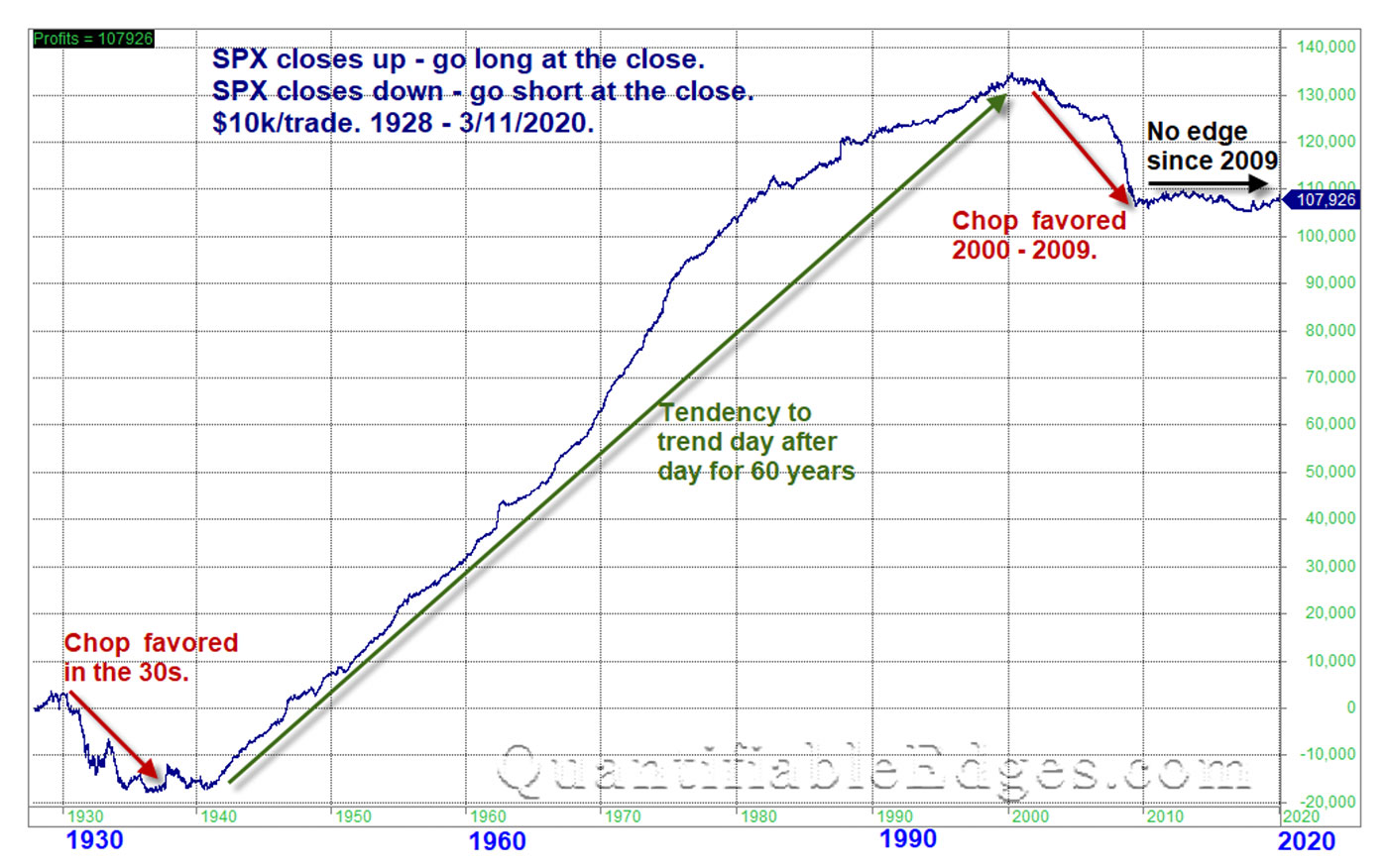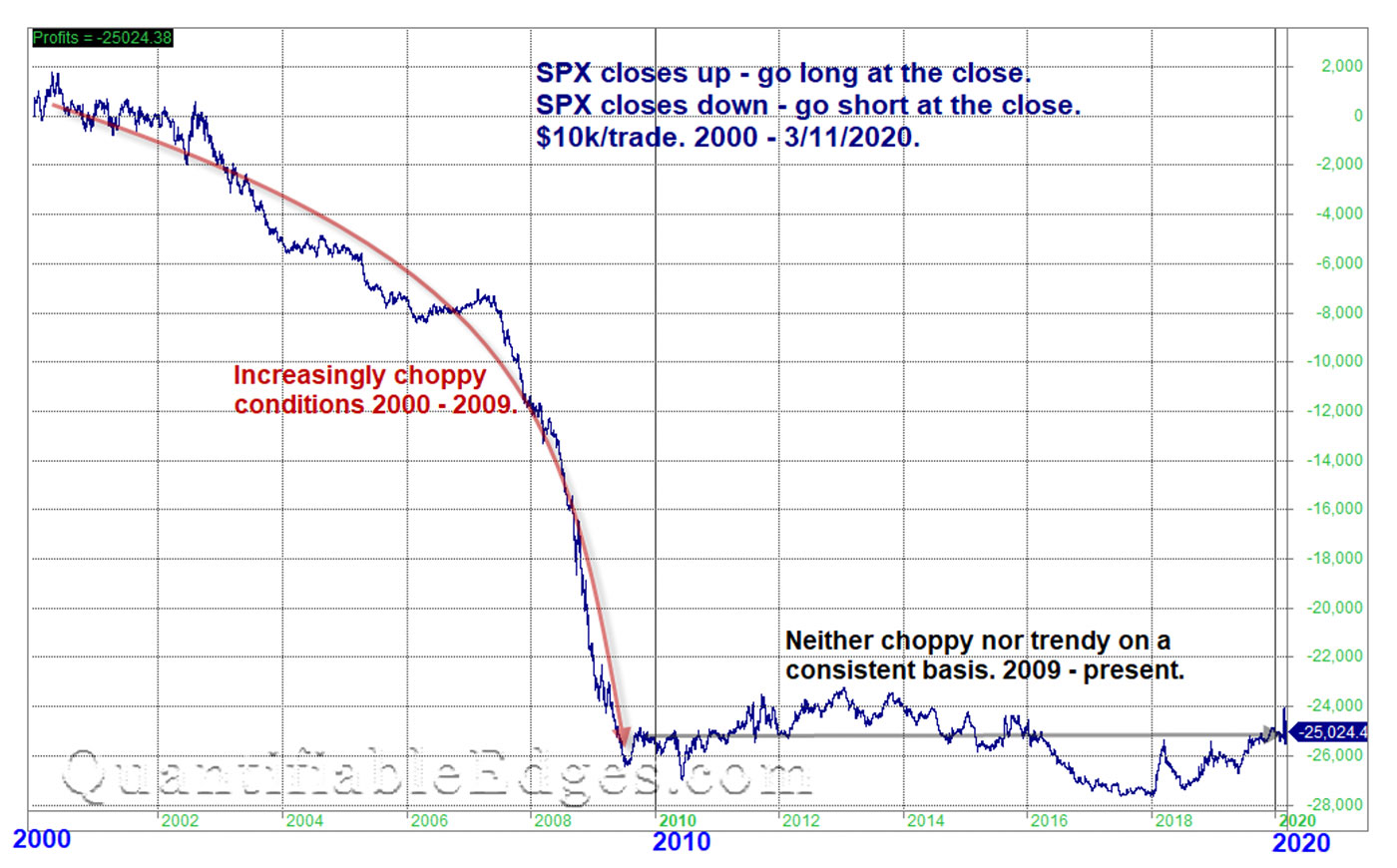

The 2020 bear market has come on faster than any other bear in history.
There was no back and forth at the top. The market went straight down.
SPX (S&P 500) is down more than 20%, and, through March 17, there have not been two consecutive up days since the selling began. The news is bad and it looks like it will continue for quite a while.
But even if the bear market lasts for several more months, or even years, there will be intermittent good news. Bear markets are incredibly emotional, and because of that, the swings that occur are very large. So let’s look at a characteristic of the last few bear markets and where money might be made if 2020 acts like those past bears.
Figure 1 is the profit curve of a strategy that was designed to measure simple market behavior. The strategy goes long at the close of any day that $SPX closes higher, and it goes short at the close of any day $SPX closes lower. It essentially shows whether the market is favoring daily trend or daily chop. (Note: The following two examples don’t indicate the price trend for $SPX, simply the broad market’s behavior in the context of choppy versus trending.)

Source: Quantifiable Edges, Amibroker
I frequently featured a version of this chart in 2008, which I referred to as the “choppiest market of all time.” To this point, the 2020 bear has not shown the same kind of chopping tendencies. Let’s zoom in to the last 20 years (Figure 2) so you can see two different types of market behavior during that period.

Source: Quantifiable Edges, Amibroker
The new bear has not entered “chop” mode yet. But it has not clearly entered “trend” mode either. So far it has been mostly down with a few strong one-day upside reversals. But if emotions continue to run high, then fear and despair could get overdone quickly on down days, and greed and hope could get overdone on up days, causing sharp reversals in both directions. In that case, the line will move down as it did during 2000–2009, signaling a choppy environment. If daily follow-through, or “trendiness,” kicks in as we saw from 1940–2000, then the line will begin moving higher.
What are the implications for trading strategies?
In a “choppy” environment, we know that moves are likely to reverse. So strategies could take advantage of this by trading against short-term extremes and then taking profits quickly when there is a reversal. On the other hand, in a “trending” environment we know market moves are likely to persist. Therefore, you would want to do the opposite: short weakness and buy short-term strength. Then look to hold on to the position for a more extended move, exiting only when the move turns against you. By tracking “choppy versus trending,” you’ll be able to see what kind of strategies are most likely to be successful depending on the current behavior of the market.
 Rob Hanna has worked in the investment industry since 2001. He is the founder and publisher of Quantifiable Edges, a quant-based website where he also publishes a newsletter. After managing a private investment fund through Hanna Capital Management LLC from 2001 to 2019, Rob joined Capital Advisors 360, where he now serves as a registered investment advisor and focuses on short-term and quantitative strategies. quantifiableedges.com
Rob Hanna has worked in the investment industry since 2001. He is the founder and publisher of Quantifiable Edges, a quant-based website where he also publishes a newsletter. After managing a private investment fund through Hanna Capital Management LLC from 2001 to 2019, Rob joined Capital Advisors 360, where he now serves as a registered investment advisor and focuses on short-term and quantitative strategies. quantifiableedges.com
